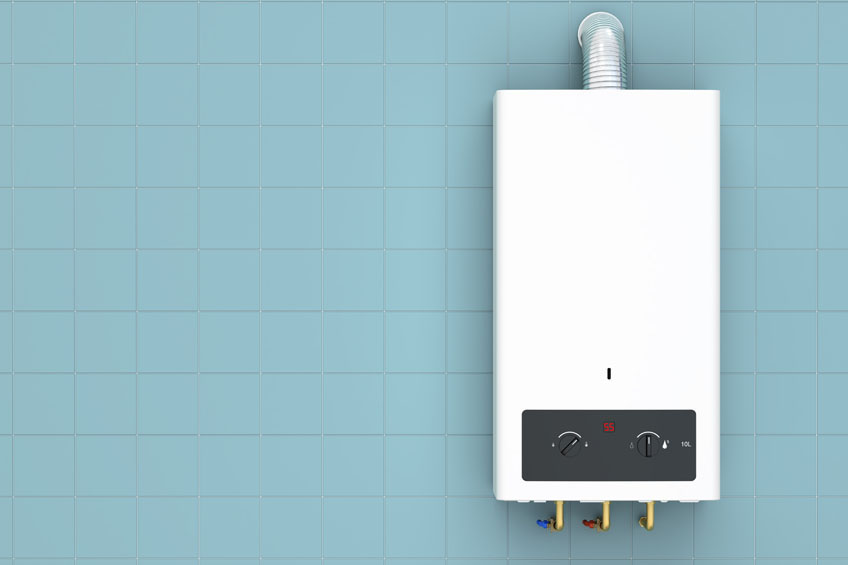A condensing boiler refers to the method by which the boiler operates, rather than the type of boiler.
If you have been researching a new boiler for your home, then you will not doubt have come across the three different types: Combi, System & Regular/Traditional.
When speaking of a condensing boiler, any of the above three types will also be either condensing or non-condensing.
However, all new boiler installations in the UK are now by law required to be a condensing boiler as they are much more energy efficient than the older style non-condensing boilers. This has been the case since 2007: http://www.nef.org.uk/knowledge-hub/energy-in-the-home/condensing-boilers
Condensing boilers typically have efficiency ratings over 90%.
In this respect you can pretty much forget about condensing boilers and focus on which type of boiler Is the most suitable for your home. As anything you buy will be condensing anyway…you won’t have a choice in the matter!
How does a condensing boiler work?
In a traditional, non-condensing boiler, fuel is burned which then hits the heat exchanger. This increases the water temperature and the water is then sent out into the system.
However, using this method, a lot of excess heat is lost and sent out through the exhaust flue which means around 30% of the energy can be wasted, or even as high as 50% in older models.
In contrast, a condensing boiler is much more efficient with less than 10% of energy being wasted. This is because they have 2 heat exchangers; the primary and secondary.
As with the non-condensing boiler, fuel is burned which then heats the primary heat exchanger.
The high temperature water vapor from the exhaust gas then condenses into water (hence the name condensing boiler). The heat from this water is transferred to the cool water via the secondary heat exchanger as it enters the system.
This means that the water entering the primary heat exchanger is already pre-heated and requires less energy to get to the desired temperature. It also drastically reduces the temperature of the gas being released by the exhaust flue.
This waste water (condensate) is then disposed of via something called a condensate pipe along with your household waste water. Condensing boilers can produce up to 2 litres of condensate per hour.
How a condensing boiler works: diagram
Condensing Boiler Problems
A downside of condensing as opposed to non-condensing boilers is that because they produce water collected from condensation, there is a chance that this water can freeze in the pipe.
It is recommended that water from the condensate pipe is disposed of along with your household waste water system internally. Just like with your shower, sink etc.
However, this is not always possible and some condensate pipes will need to go outside or through your garage. If this is the case, then there is a higher chance that freezing can occur in cold weather.
Types of Condensing Boilers:
Gas Condensing Boilers
Gas condensing boilers are by far the most common in the UK and make up the majority of installations. Gas is the cheapest method of heating your home, due to the lower cost per kW-h (kilowatt hour) of gas vs electricity or oil.
Oil Condensing Boilers
These are more commonly used in homes which are not connected to the UK gas network. This number of homes currently stands at around 4 million.
Oil condensing boilers work in a very similar way to gas condensing boilers, with the key differences being that they burn oil instead of gas for fuel. You’ll also need to have oil delivered which is stored in a tank.
Electric Condensing Boilers
While electric condensing boilers are more compact, more efficient and cheaper to install than their gas counterparts, their downfall comes with the cost of electricity. The cost per kW-h is typically around 3 times more than gas which makes them more expensive to run, all things considered.
LPG Condensing Boilers
LPG (Liquified Petroleum Gas) condensing boilers work in a very similar way to both natural gas and oil boilers. The main difference being that LPG is stored in a tank on your property and needs to be delivered periodically.
Condensing Boiler Prices
Prices for condensing boilers will vary depending on the size (power output) of the unit and the manufacturer. However, prices in the range of £500 to £1700 (excluding installation) are typical and will meet the needs of most homes. Of course, the price increases along with your hot water demands, so the cheaper models will only be suitable for small flats/terraced houses.
Installation costs for a condensing boiler will depend on the area you live and whether you are switching from one type to another. E.g. swapping from a regular/traditional boiler to a combi boiler.
What about non-condensing boilers?
As noted above, all new boiler installations in the UK now have to be condensing by law. So, if you purchased your existing boiler after 1st April 2005 (1st April 2007 for oil boilers) then you can be almost certain it will be a condensing one.
If you are looking to purchase a new boiler then the only option available will be condensing. This should be considered a good thing since condensing boilers are more efficient. So, they can help to reduce your energy bills and are better for the environment.

